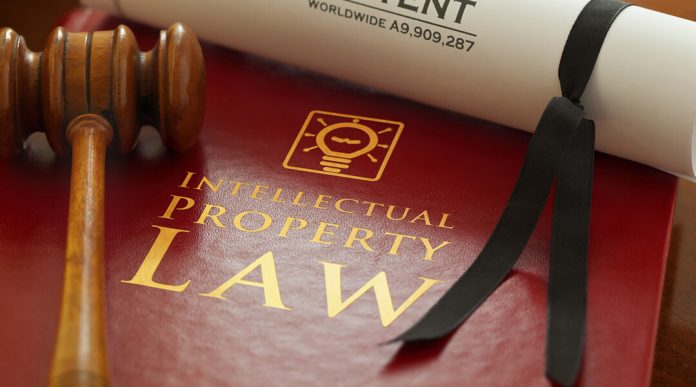This article is written by Oishika Banerji of Amity Law School, Kolkata. This article provides a detailed discussion on the different theories of protection of intellectual property rights.
Table of Contents
Introduction
The intellectual property rights function with the underlying principle of protecting the products of human intellect in the same way physical properties are safeguarded. The theories of intellectual property rights play a definite role in making someone understand the rights offered and the reason behind the same. It is interesting to note that although trade secret law is a branch of intellectual property rights, it differs significantly from other intellectual properties. With the focus majorly on specific duties, this branch of intellectual property only concerns wrongfulness that is determined by reference to independent legal norms. Thus intellectual property theories play a relevant role in trade secret law. This article will provide a detailed discussion of the different theories of protection of trade secrets that have been formulated by various philosophers with a purpose, and an objective behind them. The five theories that this article encompasses are;
- The natural rights theory has been constructed on the basis of John Locke’s idea.
- The utilitarian theory is based on the Benthamite ideal of “the greatest good for the greatest number.”
- The deterrence theory supports morality.
- The ethic and reward theory promotes the ethical and moral aspect of intellectual property rights.
- The personhood theory, which was propounded by Kant and Hegel.
The natural rights theory
The term “natural right” signifies a fundamental right that a person has in his possession. The natural rights theory takes into consideration that everyone has a natural property right on his, or her ideas. This is because creation is the result of both labour, and creativity of the person putting it into effect. Drawing its roots from John Locke’s philosophy that says an author has a natural right over the output of his, or her intellectual endeavours, the natural rights theory is applicable to both tangible and intangible properties. The extension of this theory incorporates the right to use or to exclude others from use and the right to transfer the object owned. As ownership over a creation becomes a natural right of the owner, infringement, or unauthorized use of the same will be considered as an offence. This idea has been incorporated by different categories of intellectual property as well.
Though this theory sounds too simple to be perceived, the major criticism that the theory has received cannot be ignored. The primary criticism of this theory has been presented hereunder;
- The philosophy propounded by John Locke is restrictive as it restrains a creator from being the owner of an abstract idea which by its existence can affect other innovators. Therefore, if a person is vested with the right to ownership in the idea of preparing lemon juice, the same ipso facto will prohibit other innovators from adapting similar kinds of ideas. The principle behind the copyright laws is somewhat the same as Locke’s philosophy as there exists no copyright in an idea but in an expression of that idea in a tangible form.
- The Lockean theory observes that the ownership of tangible properties is not bounded by a time limit. Generally, intellectual property rights are limited by nature as after the expiration of a prescribed time, the safeguarded object, or creation becomes available in the public domain to be freely accessible by any individual. But Locke’s theory is not completely ignored when it comes to trade secret laws. This is because trade secret protection remains throughout a creator’s life unless he/she by himself/herself retains the protection to disclose confidential information to the world.
- As per the natural rights theory, an appropriator cannot delight over all the available natural resources of the world. If a creator is provided with the ownership of his/her idea of producing milk from soybeans, the rest of the market will be cornered by the creator in concern with soymilk production. Thus to conclude, the natural rights theory encourages innovation by an individual, on one hand, it restricts the others from the same, when it comes to an idea.
The utilitarian theory
The utilitarian theory walks in the footsteps of Jeremy Bentham, and John Stuart Mill who focused on the “greatest good for the greatest number”. While the term “utilitarian” signifies “social welfare”, the theory essentially is based on the fact that industrial progress and cultural goods together can promote a better and significant economic impact on the society, and the people at large. When it comes to intellectual property rights, the theory calls for a need to encourage innovation and creations. This need can be satisfied by a minimal certification that the product of such creation will be superior in comparison to the expenses that have been incurred for the concerned product. This theory expressly bars trade secrets to be considered intellectual property because a trade secret in the process of protecting information that is exclusive to an individual, or a group, prohibits the general public from benefiting from the same. Thus acting as a deterrence for the theory to function. The utilitarian theory is also known as the incentive theory because the theory endorses society’s duty to respect the innovator’s right to ownership on his/her creation which is not only a source of profit for the creator himself/herself but the society as a whole.
Like the previous theory, the utilitarian theory has also been subject to criticism. The main criticism of this theory is that the utility gains from the impetus of a unique creation are neutralized against the losses incurred due to exclusive ownership of the creation. Thus the issue arises if at all the benefits of intellectual property rights can be weighed against the casualties or not.
Walking in the same line of fairness, and attractive culture is another theory of intellectual property which is known as the social planning theory. Although the same as the utilitarian theory, the theory differs from the previous theory in terms of its perception of a desirable society. Another theory that needs to be considered here is the economic theory of intellectual property rights which is solely related to the value of the market economy. The only contrasting view in this theory is that it does not consider property as the sole source of gaining incentive.
Deterrence theory
The deterrence theory promotes morality, virtue, and illicit commercial behaviour. The deterrence theory draws its roots from the fact opposed by the utilitarian theory which does not accept deterrence in the process of drawing benefit from innovation for the entire society. It is the trade secret laws that behave as a hindrance to unfair marketing and therefore, becomes the essence behind the deterrence theory. The term “deterrence” signifies discouragement. The theory discourages misappropriation of a creation, information, etc as the secrecy of the same is focused in this theory.
The ethic and reward theory
As the name itself suggests, the ethic and reward theory provides a justification of the exclusive rights that are provided to the original owner of innovation by the intellectual property rights. These sets of exclusive rights are considered as an expression of appreciation to the creator for his or her immense contribution to society by his or her creation. The term “ethic” signifies “fairness” whereas the term “reward” symbolises “validation of the efforts contributed in a particular thing”. Put simply, the ethics and reward theory throws light on the fact that a creator must be rewarded for the creation and in doing so the ethics behind intellectual property rights will be realized.
It is to be noted that the question as to whether the reward given to creators and inventors for benefitting the entire society, truly deserves the same or not, remains associated with the ethic and reward theory. While on one hand, the theory presumes that inventors deserve to be rewarded, on the other the theory makes it obvious that the inventors do not deserve it twice. Many consider that the creators are already remunerated taking into account the exclusive right he/she possesses over his/her work. That will be further used as a source of profit for the creator as well. Thus it is quite evident that the exclusive right that the creator has over his or her creation is excessive.
The theory of moral desert needs to be read along with this theory. Proposed by Locke, the theory validates a creator to enjoy the fruits of his or her labour all by himself or herself.
The personhood theory
The personhood theory provides that it is the creator’s creation that builds his or her personality thereby clarifying an individual’s personality is inherent to his or her property right. The theory draws its roots from Hegel’s philosophy, which provides that intellectual property rights are also associated with safeguarding personality development that extends to material things. In this way, the theory remarked that an unauthorized user who offers to the general public someone’s creation without prior consent will be considered a thief.
The theory brings along its criticism which is linked to the underlying principle of the theory which relates personality with creativity. This justification is ipso facto deficient as personality cannot be said to have been linked with the outcome of someone’s creation. Though this is one side of the coin, the other side of the coin says that even if the creation is independent of its creator, it is very much dependent on the public. It is from the public that the work gains substance and importance.
Conclusion
After considering five theories of intellectual property rights, the question that arises in a reader’s mind is whether intellectual property is a right or a privilege for the creator safeguarding his creation from misappropriation. To some the words right and privilege can sound synonymous whereas to many the words may appear to be different when it comes to their respective social significance. Each theory is accompanied by its pros and cons, and therefore it is difficult to reach a conclusion as to which theory gains supremacy in explaining intellectual property rights.
References
- https://www.crf-usa.org/foundations-of-our-constitution/natural-rights.html
- https://plato.stanford.edu/entries/locke-political/
- https://lawtimesjournal.in/deterrence-theory-as-a-theory-of-punishment/
- https://scholarship.law.upenn.edu/faculty_scholarship/423/
- http://scholarship.law.upenn.edu/cgi/viewcontent.cgi?article=1422&context=faculty_scholarship
Students of Lawsikho courses regularly produce writing assignments and work on practical exercises as a part of their coursework and develop themselves in real-life practical skills.
LawSikho has created a telegram group for exchanging legal knowledge, referrals, and various opportunities. You can click on this link and join:
https://t.me/joinchat/J_0YrBa4IBSHdpuTfQO_sA
Follow us on Instagram and subscribe to our YouTube channel for more amazing legal content.













